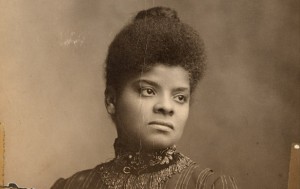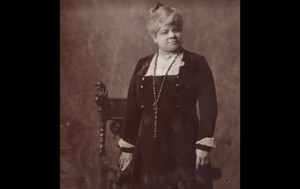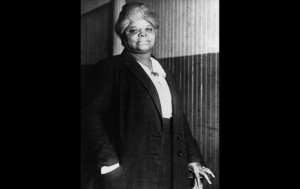Ida B. Wells
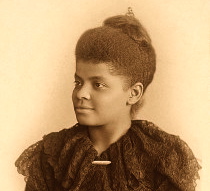
Ida B. Wells: Women’s Rights
Ida B. Wells biographer Mia Bay describes Wells as a “natural-born feminist” who inspired other women to become activists, support the suffrage movement and influence change in the country.
(born July 16, 1862 – died March 25, 1931) was an African-Americanjournalist, newspaper editor, suffragist, sociologist and, with her husband, newspaper owner Ferdinand L. Barnett, an early leader in the civil rights movement. She documented lynching in the United States, showing how it was often a way to control or punish blacks who competed with whites. She was active in women’s rights and the women’s suffrage movement, establishing several notable women’s organizations. Wells was a skilled and persuasive rhetorician, and traveled internationally on lecture tours.
Early Life and Education
Ida Bell Wells was born a slave in Holly Springs, Mississippi in 1862, just before President Abraham Lincoln issued the Emancipation Proclamation. Her father was James Wells and her mother was Elizabeth “Lizzie” Warrenton Wells. Both parents were enslaved until freed under the Proclamation.
Ida’s father James was a master at carpentry and a “race man” who worked for the advancement of blacks. He was very interested in politics and was a member of the Loyal League. He attended Shaw University in Holly Springs (now Rust College) but dropped out to help his family. He also attended public speeches and campaigned for local black candidates, but he never ran for office.
Ida attended Shaw as well but was expelled for her rebellious behavior and temper after confronting the college president. While visiting her grandmother in the Mississippi Valley in 1878, when she was 16 years old, Ida received word that Holly Springs had suffered a yellow fever epidemic. Her parents and her 10-month-old brother, Stanley died.
Early Career
After the untimely death of her parents and one of her siblings due to yellow fever, Ida B. Wells, the eldest of the Wells children, has to drop out of school at the age of 16 to care for her brothers and sisters.
Following the funerals, friends and relatives decided that the six remaining Wells children should be sent to various foster homes. Ida resisted this solution. To keep her younger siblings together as a family, she dropped out of Shaw and found work as a teacher in a black elementary school. (The schools were racially segregated). Her grandmother Peggy Wells, along with other friends and relatives, stayed with the children during the week while she was away teaching. Without this help, she would have not been able to keep her siblings together. She resented that white teachers were paid $80 a month when she was paid only $30 a month. This discrimination made her more interested in the politics of race and improving the education of blacks.
In 1883, Ida B. Wells took three of her younger siblings to Memphis, Tenn., to live with her aunt and to be closer to other family members. She found she could earn higher wages there as a teacher. Soon after moving, she was hired in Woodstock for the Shelby County school system. During her summer vacations, she attended summer sessions at Fisk University, a historically black collegein Nashville; its graduates were well respected in the black community. She also attended LeMoyne. She held strong political opinions and provoked many people with her views on women’s rights. At 24, she wrote, “I will not begin at this late day by doing what my soul abhors; sugaring men, weak deceitful creatures, with flattery to retain them as escorts or to gratify a revenge.”
On May 4, 1884, a train conductor with the Chesapeake, Ohio and Southwestern Railroad ordered Wells to give up her seat and move to the smoking car, which was already crowded with other passengers. The year before, the Supreme Court had invalidated the federal Civil Rights Act of 1875, which had banned racial discrimination in public accommodations. This verdict allowed railroad companies to continue racial segregation of their passengers.
Born a slave in 1862, Ida B. Wells fought against the odds to become an educated woman and civil rights activist that played a major part in the anti-lynching crusade in the 1890’s
Wells refused to give up her seat, 71 years before the activist Rosa Parks showed similar resistance on a bus. The conductor and two men dragged Wells out of the car. When she returned to Memphis, she hired an African-American attorney to sue the railroad. She also became a public figure in Memphis when she wrote a newspaper article for The Living Way, a black church weekly, about her treatment on the train. When her lawyer was paid off by the railroad, she hired a white attorney. She won her case on December 24, 1884, when the local circuit court granted her a $500 settlement. The railroad company appealed to the Tennessee Supreme Court, which reversed the lower court’s ruling in 1887. It concluded, “We think it is evident that the purpose of the defendant in error was to harass with a view to this suit, and that her persistence was not in good faith to obtain a comfortable seat for the short ride.” Wells was ordered to pay court costs.
While teaching elementary school, Wells was offered an editorial position for the Evening Star. She also wrote weekly articles for The Living Way weekly newspaper under the pen name “Iola” and gained a reputation for writing about the race issue. In 1889, she became co-owner and editor of Free Speech and Headlight, an anti-segregationist newspaper that was started by the Reverend Taylor Nightingale and was based at the Beale Street Baptist Church in Memphis. It published articles about racial injustice.
In March 1892, racial tensions were rising in Memphis. Violence was becoming the norm. Her three friends, Thomas Moss, Calvin McDowell, and Henry Stewart, owned the People’s Grocery Company. It was doing well and was seen as competitive with a white-owned grocery store across the street. While Wells was out of town in Natchez, Mississippi, a white mob invaded her friends’ store. During the altercation, three white men were shot and injured. Moss, McDowell, and Stewart were arrested and jailed. A large lynch mob stormed the jail and killed the three men.
After the lynching of her friends, Wells wrote in Free Speech and Headlight, urging blacks to leave Memphis:
“There is, therefore, only one thing left to do; save our money and leave a town which will neither protect our lives and property, nor give us a fair trial in the courts, but takes us out and murders us in cold blood when accused by white persons.”
Wells emphasized the public spectacle of the lynching. Over 6,000 blacks did leave; others organized boycotts of white-owned businesses. After being threatened with violence, she bought a pistol. She later wrote, “They had made me an exile and threatened my life for hinting at the truth.”
Investigative Journalism
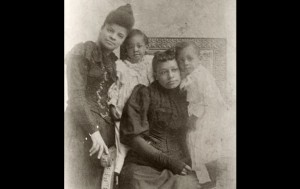 Ida B. Wells moves to Memphis, Tennessee, to live with her aunt in 1882, bringing her younger sisters with her.
Ida B. Wells moves to Memphis, Tennessee, to live with her aunt in 1882, bringing her younger sisters with her.
The murder of her friends drove Wells to research and document lynchings and their causes. She began investigative journalism, looking at the charges given for the murders. She officially started her anti-lynching campaign. She spoke on the issue at various black women’s clubs, and raised more than $500 to investigate lynchings and publish her results. Wells found that blacks were lynched for such reasons as failing to pay debts, not appearing to give way to whites, competing with whites economically, being drunk in public. She published her findings in a pamphlet entitled “Southern Horrors: Lynch Laws in All Its Phases.” She wrote an article that suggested that, unlike the myth that white women were sexually at risk of attacks by black men, most liaisons between black men and white women were consensual. While she was away in Philadelphia, a mob destroyed the offices of the Free Speech and Headlight on May 27, 1892 in retaliation for her controversial articles, three months after her three friends were lynched.
Wells next spoke to groups in New York City, where her audiences included many leading African-American women. Because of the threats to her life, she moved from Memphis to Chicago. Wells continued to wage her anti-lynching campaign and to write columns attacking Southern injustices. Her articles were published in The New York Age newspaper. Her writings continued to investigate the incidents that were referred to as causes for lynching black men.
Together with Frederick Douglass and other black leaders, she organized a black boycott of the 1893 World’s Columbian Exposition in Chicago, for its failure to collaborate with the black community on exhibits representing African-American life. Wells, Douglass, Irvine Garland Penn and Ferdinand Barnett wrote sections of a pamphlet to be distributed there: “Reasons Why the Colored American Is Not in the World’s Columbian Exposition” detailed the progress of blacks since their arrival in America and the workings of Southern lynchings. Wells later reported to Albion W. Tourgée that copies of the pamphlet had been distributed to more than 20,000 people at the fair. After the World’s Fair in Chicago, Wells decided to stay in the city instead of returning to New York. That year she started work with the Chicago Conservator, the oldest African-American newspaper in the city.
Also in 1893, Wells contemplated a libel suit against two black Memphis attorneys. She turned to Tourgée, who had trained and practiced as a lawyer and judge, for possible free legal help. Deeply in debt, Tourgée could not afford to help but asked his friend Ferdinand L. Barnett if he could. Barnett accepted the pro bono job. Born in Alabama, Barnett had become the editor of the Chicago Conservator in 1878. He was an assistant state attorney for 14 years.
Personal Life
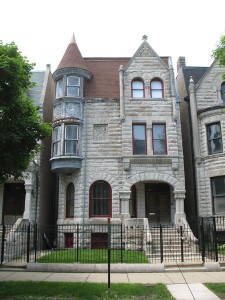 Ida B. Wells-Barnett House is a Chicago Landmark and National Historic Landmark.
Ida B. Wells-Barnett House is a Chicago Landmark and National Historic Landmark.
In 1895, Wells married Ferdinand Barnett. She set an early precedent as being one of the first married American women to keep her own last name along with her husband’s.
The couple had four children: Charles, Herman, Ida, and Alfreda. In her autobiography, A Divided Duty, Wells described the difficulty she had splitting her time between her family and her work. She continued to work after the birth of her first child, traveling and bringing the infant Charles with her. Although she tried to balance her worlds, she could not be as active in her work. Susan B. Anthony said she seemed “distracted.” After having her second child, Wells stepped out of her touring and public life for a time, as she could no longer balance her job with her family.
Later public Career
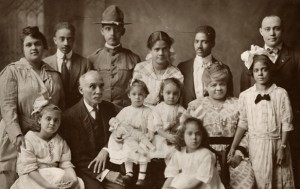 Later in life, Ida B. Wells finds it difficult to split time between her family and her activism.
Later in life, Ida B. Wells finds it difficult to split time between her family and her activism.
Wells received much support from other social activists and her fellow clubwomen. In his response to her article in the Free Speech, Frederick Douglass expressed approval of her work: “You have done your people and mine a service…What a revelation of existing conditions your writing has been for me.” (Freedman, 1994). Wells took her anti-lynching campaign to Europe with the help of many supporters. In 1896, Wells founded the National Association of Colored Women, and also founded the National Afro-American Council. Wells formed the Women’s Era Club, the first civic organization for African-American women. This later was named the Ida B. Wells Club, in honor of its founder.
In 1899, Wells was struggling to manage a home life and a career life, but she was still a fierce campaigner in the anti-lynching circle. This was illustrated when the National Association of Colored Women’s club met that year in Chicago. To Wells’ surprise, she was not invited to take part in the convention. When she confronted the president of the club, Mrs. Terrell told her that the women of Chicago wrote to say that if Wells were to take part in the club, they would no longer aid the association. Wells later learned that Terrell’s own competitiveness played a part.
After traveling through the British Isles and the United States teaching and lecturing about the problem of lynchings in the United States, Wells settled in Chicago and worked to improve conditions for its rapidly growing African-American population. People were starting to move out of the South to northern industrial cities in the Great Migration. Competition for jobs and housing caused a rise in social tensions because of the rapid changes. African-American migrants also competed with an expanding wave of rural immigrants from Europe, who were now in competition for jobs. Wells spent the latter thirty years of her life in Chicago working on urban reform. She also raised her family and worked on her autobiography. After her retirement, Wells wrote her autobiography, Crusade for Justice(1928).
She never finished it; the book ends in the middle of a sentence, in the middle of a word. Wells died of uremia (kidney failure) in Chicago on March 25, 1931, at the age of sixty-eight.
Europe
Wells took two tours to Europe on her campaign for justice, the first in 1893 and the second in 1894. While she was in Europe she spent her time in both Scotland and England, where she gave many speeches and newspaper interviews.
In 1893, Wells went to Great Britain at the invitation of Catherine Impey, a British Quaker. An opponent of imperialism and proponent of racial equality, Impey wanted to ensure that the British public learned about the problem of lynching. Wells rallied a moral crusade among the British. Although Wells and her speeches, complete with at least one grisly photograph showing grinning white children posing beneath a suspended corpse, caused a stir among audiences, they still remained doubtful. Her intentions were to raise money and expose the United States problem with lynching, but Wells was paid so little that she could barely pay her travel expenses.
Wells returned to Great Britain in 1894. Before leaving she called on William Penn Nixon, the editor of Daily Inter-Ocean. This was a Chicago paper that the local Republican Party organ and competitor to the Democratic Chicago Tribune. The Daily Inter- Oceanwas the only paper in the US that persistently denounced lynching. After she told Nixon about her planned tour in England, he asked her to write for the newspaper while on tour. She became the first black woman to be a paid correspondent for a mainstream white newspaper. (Tourgée had been writing a column for the same paper.)
One article was “In Pembroke Chapel.” She was invited to speak by the minister C.F. Aked. He found it difficult to accept her accounts, but after traveling to the New York World’s Fair, read in local papers about the Miller lynching in Bardwell, Kentucky. He realized that Wells’ accounts were accurate. Wells was effective in speaking to European audiences. They were shocked to learn about the extent of violence against blacks in the US. Wells’ two tours to Europe helped gain support for her cause. She called for the formation of groups to formally protest the lynchings. Wells helped catalyze anti-lynching groups in Europe, which tried to press the US to guarantee the safety of blacks in the South.
Willard Controversy
Frances Willard, secretary of the Woman’s Christian Temperance Union, a women’s organizations with branches in every state and a membership of over 200,000, had used the issue of temperance to politicize women who saw organizing for suffrage as too radical.
Wells’ anti-lynching campaign brought the two to England concurrently. As Wells described the horrors of American lynchings, British liberals were incredulous that white women such as Willard, who had been heralded in the English press as the “Uncrowned Queen of American Democracy,” would turn a blind eye to such violence. Wells accused Willard of being silent on the issue of lynchings, and of making racial comments which would add fuel to the fire of mob violence. To support her assertion, Wells referred to an interview Willard had conducted during a tour of the South in which Willard had cast aspersions, blaming blacks for the defeat of temperance legislation. “The colored race multiplies like the locusts of Egypt,” she had said, and “the grog shop is its center of power… The safety of women, of childhood, of the home is menaced in a thousand localities.”
In response, Willard and Lady Somerset, attempted to use their influence to keep Wells’ comments out of the press. Wells responded by revealing that despite Willard’s abolitionist forbears and black friends, no black women were admitted to the WCTU’s southern branches.
The dispute between Wells and Willard in England intensified the campaign against Wells in the American Press. The New York Timesran an article insisting that black men were prone to rape, and that Wells was a “slanderous and nasty minded mulatress” who was looking for more “income” than “outcome.” These attacks in the American press swayed many Britons to Wells’ cause. “It is idle for men to say that the conditions which Miss Wells describes do not exist,” a British editor wrote. “Whites of America may not think so; British Christianity does and all the scurrility of the American press won’t alter the facts.”
Wells’ British tour was ultimately led to the formation of the British Anti-Lynching Committee, which included the Duke of Argyll, the Archbishop of Canterbury, members of Parliament, and the editors of The Manchester Guardian.
Southern Horrors and The Red Record
In 1892 she published a pamphlet titled Southern Horrors: Lynch Law in All Its Phases, andA Red Record, 1892–1894, which documented research on a lynching. Having examined many accounts of lynching based on alleged “rape of white women,” she concluded that Southerners concocted rape as an excuse to hide their real reason for lynchings: black economic progress, which threatened not only white Southerners’ pocketbooks, but also their ideas about black inferiority.
“The lesson this teaches and which every Afro-American should ponder well, is that a Winchester rifle should have a place of honor in every black home, and it should be used for that protection which the law refuses to give. When the white man who is always the aggressor knows he runs as great a risk of biting the dust every time his Afro-American victim does, he will have greater respect for Afro-American life. The more the Afro-American yields and cringes and begs, the more he has to do so, the more he is insulted, outraged and lynched.”
The Red Record is a one hundred page pamphlet describing lynching in the United States since the Emancipation Proclamation, while also describing blacks’ struggles since the time of the Emancipation Proclamation. The Red Record begins by explaining the alarming severity of the lynching situation in the United States. An ignorance of lynching in the U.S., according to Wells, developed over a span of ten years. Wells talks about slavery, saying the black man’s body and soul were owned by the white man. The soul was dwarfed by the white man, and the body was preserved because of its value. She mentions that “ten thousand Negroes have been killed in cold blood, without the formality of judicial trial and legal execution,” therefore launching her campaign against lynching in this pamphlet, The Red Record.
Frederick Douglass wrote an article explaining three eras of Southern barbarism and the excuses that coincided with each. Wells goes into detail about each excuse:
- The first excuse that Wells explains is the “necessity of the white man to repress and stamp out alleged ‘race riots.’” Once the Civil War ended, there were many riots supposedly being planned by blacks; whites panicked and resisted them forcefully.
- The second excuse came during the Reconstruction Era: blacks were lynched because whites feared “Negro Domination” and wanted to stay powerful in the government. Wells encouraged those threatened to move their families somewhere safe.
- The third excuse was: Blacks had “to be killed to avenge their assaults upon women.” Wells explains that any relationship between a white woman and a black man was considered rape during that time period. In this article she states, “Nobody in this section of the country believes the old threadbare lie that Negro men rape white women.”
Wells lists fourteen pages of statistics concerning lynching done from 1892–1895; she also includes pages of graphic stories detailing lynching done in the South. She credits the findings to white correspondents, white press bureaus, and white newspapers. The Red Record was a huge pamphlet, not only in size, but in influence.
Despite Wells-Barnett’s attempt to garner support among white Americans against lynching, she felt her campaign could not overturn the economic interests whites had in using lynching as an instrument to maintain Southern order and discourage Black prosperity, specifically Black men’s economic ventures. Ultimately, Wells-Barnett concluded that reason and compassion for the plight of the Negro would never appeal to Southern whites. This pessimism however was not defeating. It made Wells-Barnett realize that armed resistance was perhaps the Negro’s only defense against lynching, and launched her efforts to use more powerful white nations like Britain to shame and sanction the racist practices of America.
Rhetorical Style and Effect
Always having been one to stand up for her beliefs, the incident that causes Ida B. Wells to take action against the injustices that she saw was the lynching of three grocery store owners.
Wells’ 1892 speech, Southern Horrors: Lynch Law in All Its Phases is important as a historical document and as the initiating event in what became a social movement; as a rhetorical work, it is significant in three respects.
First, as in her writings, she used evidence and argument in highly sophisticated ways that prevented members of the audience from dismissing her claims as biased or untrue.
Second, the speech was an insightful and sophisticated analysis of the interrelationship of sex, race, and class.
Third, in contrast to the rhetorical acts of women, this speech contained no stylistic markers indicating attempts by a woman speaker to appear “womanly” in what is perceived as a male role-that of rhetor.
Her use of evidence and argument had to overcome severe obstacles. She had to refute the cultural history of sexism that made the cry of rape (of a white woman) adequate justification for violence against Afro-Americans.
In order to prove this point, Wells used evidence from irrefutable sources. She used an excerpt from her own originally anonymous editorial in the Memphis Free Speech which was in response to the unlawful murders of three of her fellow townsmen, as well as two responses to her editorial from white newspapers: The Daily Commercial and The Evening Scimitar.
“Nobody in this section of the country believes the old thread-bare lie that Negro men rape white women. If Southern white men are not careful, they will overreach themselves and public sentiment will have a reaction; a conclusion will then be reached which will be very damaging to the moral reputation of their women.” —Free Speech May 21, 1892
The Daily Commercial of Wednesday following, May 25, contained the following leader:
“Those negroes who are attempting to make the lynching of individuals of their race a means for arousing the worst passions of their kind are playing with a dangerous sentiment. The negroes may as well understand that there is no mercy for the negro rapist and little patience with his defenders. A negro organ printed in this city, in a recent issue publishes the following atrocious paragraph: “Nobody in this section of the country believes the old thread-bare lie that negro men rape white women. If Southern white men are not careful they will overreach themselves, and public sentiment will have a reaction; and a conclusion will be reached which will be very damaging to the moral reputation of their women.
The fact that a black scoundrel is allowed to live and utter such loathsome and repulsive calumnies is a volume of evidence as to the wonderful patience of Southern whites. But we have had enough of it.
There are some things that the Southern white man will not tolerate, and the obscene intimations of the foregoing have brought the writer to the very outermost limit of public patience. We hope we have said enough.”
The Evening Scimitar of same date, copied the Commercial’s editorial with these words of comment:
“Patience under such circumstances is not a virtue. If the negroes themselves do not apply the remedy without delay it will be the duty of those whom he has attacked to tie the wretch who utters these calumnies to a stake at the intersection of Main and Madison Sts., brand him in the forehead with a hot iron and perform upon him a surgical operation with a pair of tailor’s shears.”
Always having been one to stand up for her beliefs, the incident that causes Ida B. Wells to take action against the injustices that she saw was the lynching of three grocery store owners.
Her 17 relatively detailed examples of the lynching of African Americans allowed her audience to weigh the evidence and consider its plausibility, and the fact that much of it came from the public press, in some cases from white southern newspapers as shown above, added to the credibility of her accounts. Emotional response was prompted by the argument of these details rather than by exhortation.
By examining her speech through an application of the tradition of classical rhetoric whose principles Aristotle was the first to codify, it is obvious that by including the gruesome details of the several lynchings she uses for examples, Wells is appealing to the ethos of her audience.
Throughout this argument there was a strong appeal to fundamental values of fairness, to the right to trial by jury, and to the right to full and careful investigation of crimes, appeals that added weight to her accusation that silent bystanders were guilty of complicity. These are also examples of Wells’ appeal to logos.
Wells was remarkable for her skill in the use of argument and evidence. Further, she was a woman who assumed the role of rhetor and made no attempt to give that role a womanly cast.
In addition to remarkable skill in the use of both argument and evidence, her work was also augmented through her exceptional personal record keeping; throughout her life she kept detailed journals which are kept at the University of Chicago in special collections. These journals in her own handwriting reveal notes on special events and in the drafts of her autobiography there are references made to records she kept decades prior to beginning her autobiography.
Her attention to detail in the midst of all the struggles that surrounded her adds to her historical significance as an important rhetorician. When she wrote her autobiography she referred not only to her own detailed notes in journals throughout her life, but also to newspaper and other historical clippings.
Looking at the legacy of her work as an entire collection reveals her additional noteworthy ability to adapt a message to the audience she was addressing as she wrote not only in papers, and for speeches, but also in church pamphlets and for community organizations.
Her life reveals a tenacity to push ahead despite every obstacle- to promote an idea and use every possible resource at ones disposal. Wells used her position as a teacher, a community member, a political activist, a mother, an editor, and an ordinary citizen to disseminate her rhetorical work. Her grandchildren have established a museum, a scholarship, a yearly birthday celebration, and a website to continue her work.
Wells and W. E. B. Du Bois
The lives of W. E. B. Du Bois and Ida B. Wells often ran along parallel tracks. Both used their journalistic writing to condemn lynching. Wells and Du Bois seemed to disagree on the story of why her name did not appear on the original list of NAACP founders. Du Bois implied that Wells had chosen not to be included. However, in her autobiography, Wells complains that Du Bois deliberately excluded her from the list.
Legacy
Throughout her life, Wells was militant in her demands for equality and justice for African-Americans and insisted for the African-American community to win justice through its own efforts. Since her death, interest in her life and legacy has only grown. Her life is the subject of a widely performed musical drama, which debuted in 2006, by Tazewell Thompson, Constant Star. The play sums her up:
“…A woman born in slavery, she would grow to become one of the great pioneer activists of the Civil Rights movement. A precursor of Rosa Parks, she was a suffragist, newspaper editor and publisher, investigative journalist, co-founder of the NAACP, political candidate, mother, wife, and the single most powerful leader in the anti-lynching campaign in America. A dynamic, controversial, temperamental, uncompromising race woman, she broke bread and crossed swords with some of the movers and shakers of her time: Frederick Douglass, Susan B. Anthony, Marcus Garvey, Booker T. Washington, W. E. B. Du Bois, Frances Willard, and President McKinley. By any fair assessment, she was a seminal figure in Post-Reconstruction America.”
On February 1, 1990, the United States Postal Service issued a 25 cent postage stamp in her honor. In 2002, Molefi Kete Asante listed Wells on his list of 100 Greatest African Americans. In 1941, the Public Works Administration (PWA) built the Ida B. Wells Homes, a Chicago Housing Authority public housing project in the Bronzeville neighborhood on the south side in Chicago, Illinois. The buildings were demolished in August 2011.



